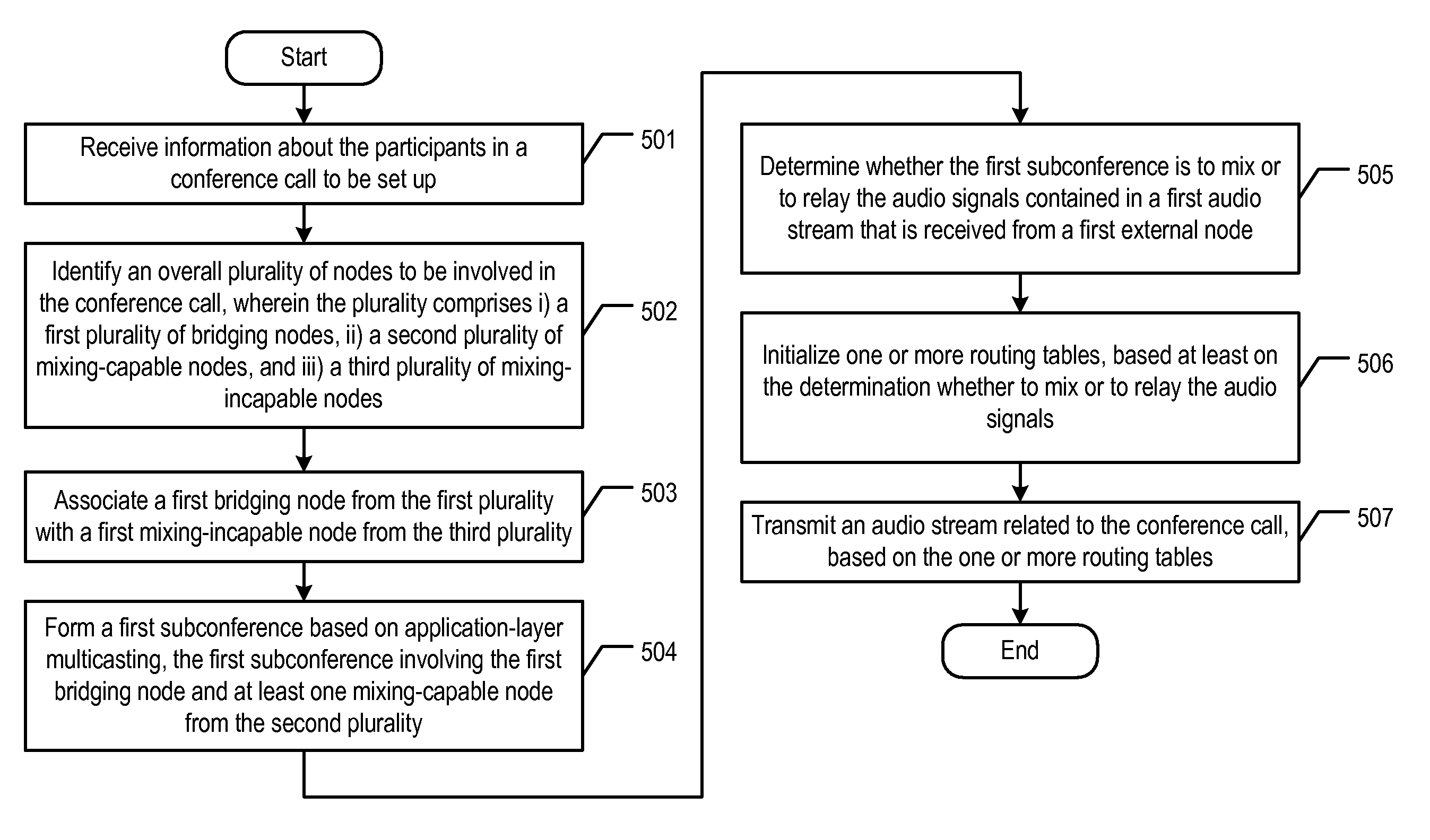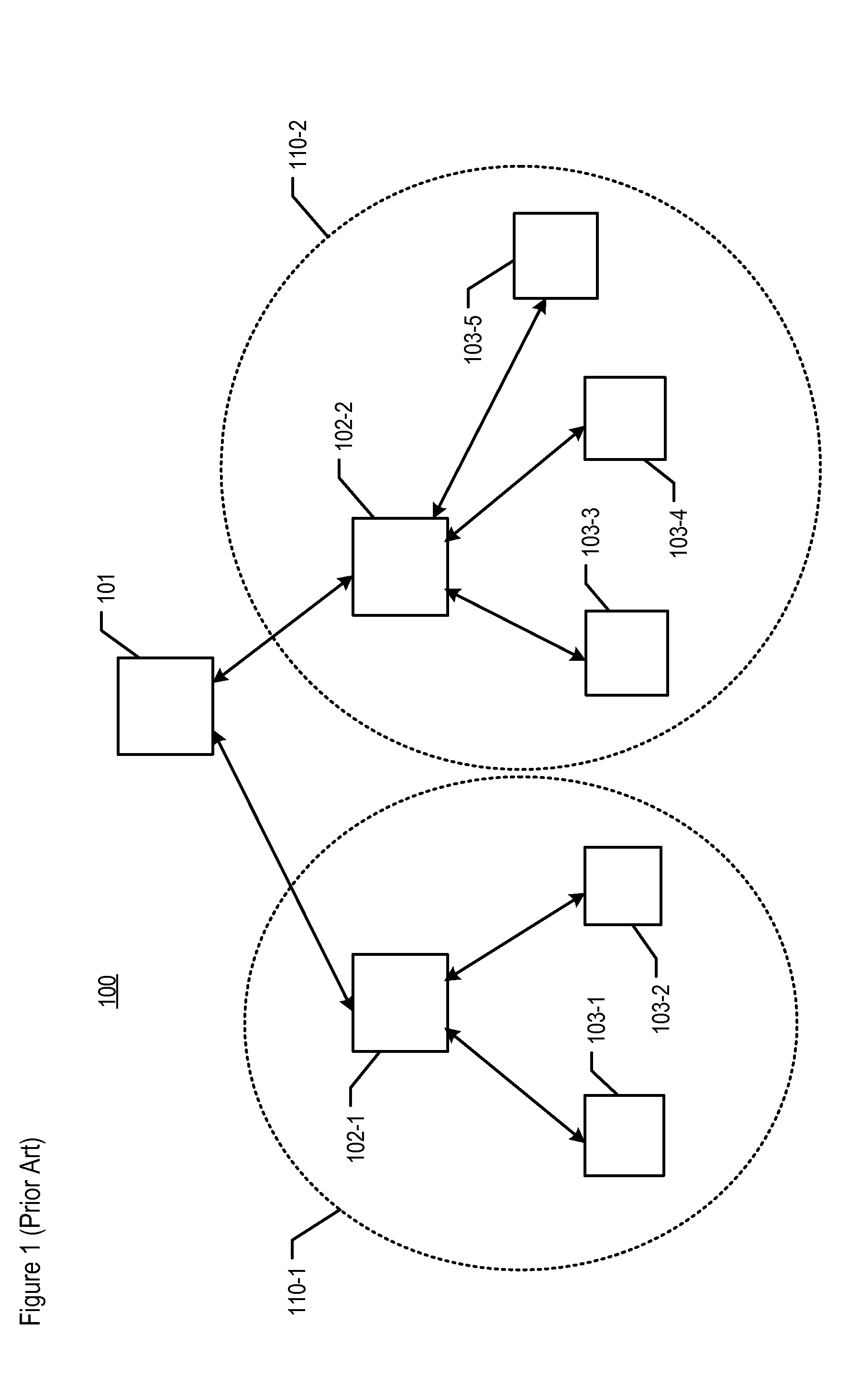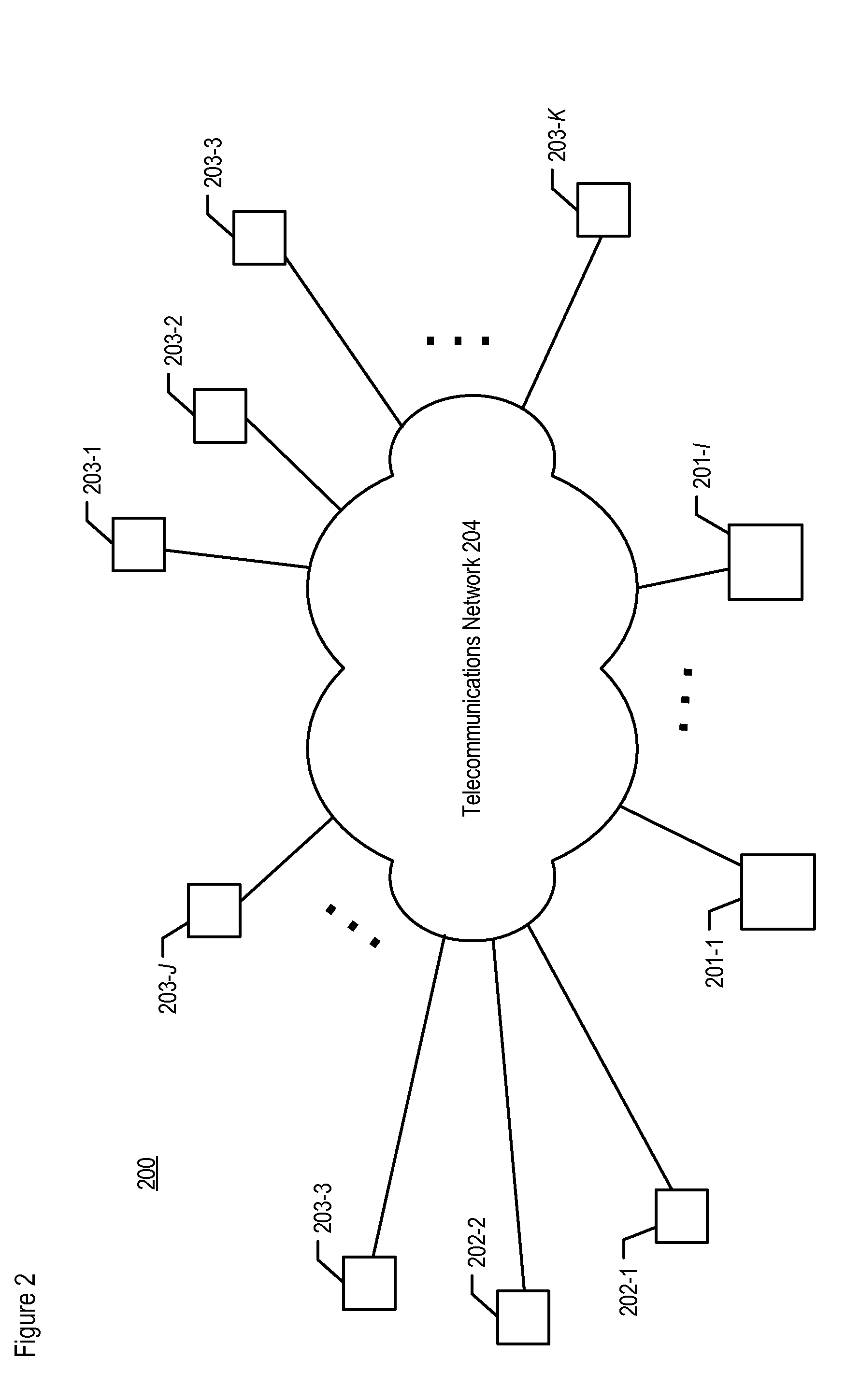Enhanced application-layer multicast for peer-to-peer conferencing
a peer-to-peer conferencing and application-layer multicast technology, applied in the field of telecoms, can solve the problems of multiple unicast, severe bottlenecks between the source node and the closest network node, and many multicast communication applications to fail, so as to improve the allocation of bandwidth and processing resources.
- Summary
- Abstract
- Description
- Claims
- Application Information
AI Technical Summary
Benefits of technology
Problems solved by technology
Method used
Image
Examples
Embodiment Construction
[0016]The following terms are defined for use in this Specification, including the appended claims:[0017]The term “call,” and its inflected forms, is defined as an interactive communication involving two or more participating nodes (e.g., telecommunications endpoints or phones, etc.). A voice call that involves audio signals is featured in the illustrative embodiment of the present invention. However, it will be clear those who are skilled in the art, after reading this specification, how to make and use alternative embodiments in which a call is a video call with audio, or an instant messaging (IM) session with audio, or yet another type of call where mixable signals are exchanged. Furthermore, a call can involve one or more human call parties, or one or more automated devices, or both.[0018]The term “bridging node,” and its inflected forms, is defined as an endpoint or other telecommunications device that is capable of mixing individual audio signals that are associated with a cal...
PUM
 Login to View More
Login to View More Abstract
Description
Claims
Application Information
 Login to View More
Login to View More - R&D
- Intellectual Property
- Life Sciences
- Materials
- Tech Scout
- Unparalleled Data Quality
- Higher Quality Content
- 60% Fewer Hallucinations
Browse by: Latest US Patents, China's latest patents, Technical Efficacy Thesaurus, Application Domain, Technology Topic, Popular Technical Reports.
© 2025 PatSnap. All rights reserved.Legal|Privacy policy|Modern Slavery Act Transparency Statement|Sitemap|About US| Contact US: help@patsnap.com



